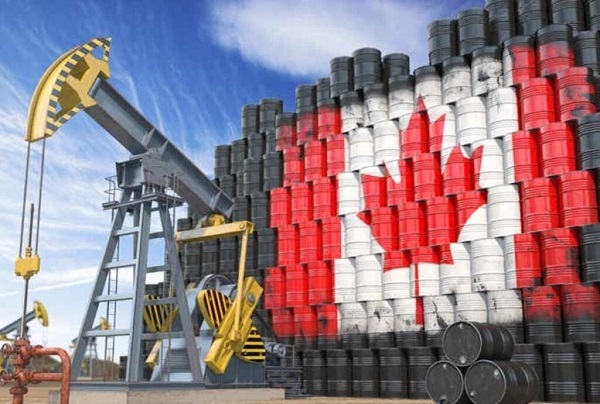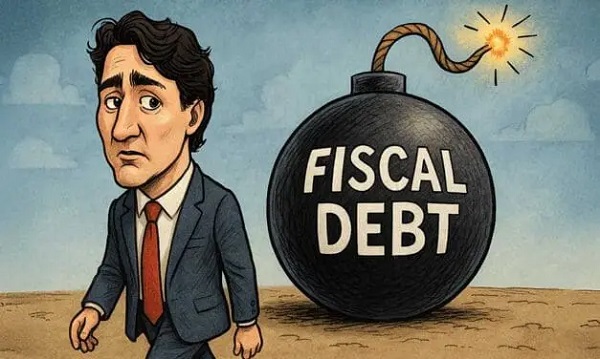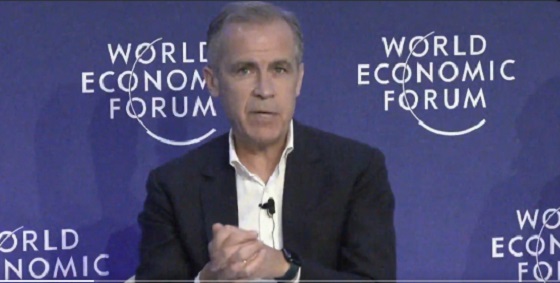Uncategorized
Mega Millions, Powerball prizes come down to math, long odds

DES MOINES, Iowa — For all the anticipation about whether someone will finally snag the gigantic Mega Millions and Powerball jackpots, the games come down to two things: simple math — and very long odds.
But there are some quirks and surprises about the math equations that likely will soon vault someone into stratospheric wealth after the jackpots grew for months without a winner.
WHAT ARE THE JACKPOTS?
The biggest quirk starts with this fact: The advertised $1.6 billion Mega Millions prize — the world’s largest ever lottery jackpot — and $620 million Powerball prize aren’t quite real. That is, those are the amount you’d be paid if you chose an annuity, doled out over 29 years. Nearly every winner opts for cash, which is the amount of money the lottery folks actually have in the bank ready to pay out to the company that would fund the annuity.
The cash option is still massive, at $904 million for Mega Millions and $354.3 million for Powerball. But those numbers aren’t splayed across billboards and shown in countless mini marts across America.
POTENTIAL COMBINATIONS
The dismal odds of winning the Mega Millions jackpot — 1 in 302.5 million — mean there are 302.5 million potential number combinations, or a little less than one combination for each of the 328 million people living in the U.S. For last Friday’s drawing, about 59
That would mean a 25
The odds of winning Powerball are 1 in 292.2 million.
AS THE GRAND PRIZE INCREASES, SO DO WINNER NUMBERS
The odds of winning don’t change as jackpots get larger, but the chance that more than one winner will share the prize do. When so many people rush to play as a jackpot soars , the chances increase that two or three tickets — of the millions of tickets sold — will match. Of the five largest jackpots awarded in the U.S., three went to multiple winners. The largest single prize went to a 2017 player from Massachusetts who celebrated a $758.7 million Powerball payday.
TWO JACKPOTS, ONE WINNER?
If the odds of winning either Mega Millions or Powerball don’t seem gigantic enough, how about winning them both? Spend $4 on a ticket for each game and it could happen. But the odds aren’t especially
LUCKY NUMBERS
For Mega Millions, players choose six numbers: five from a range of white balls, numbered 1 to 70, and one number for the Mega Ball, with a range of 1 to 25. What numbers have come up most? Since 2010, that
Lottery officials are quick to point out that the number selection is random, so there’s no reason that what hit in the past will be selected again. The game also has changed over the years, so some numbers included weren’t always in the mix.
LUCKY STATES
Not surprisingly, the most Mega Million jackpot winners in the past five years have come from states with the largest populations. New York, with the nation’s fourth-largest population, leads with seven winners. The No. 1 population state of California is second in Mega Millions winners with six, while Illinois is third with four winners.
Still, there are some quirks, as Georgia has the eight-largest population and three winners and Washington state has two winners but only the 13th largest population. Texas has the nation’s second-largest population, yet players have only bought winning Mega Millions tickets in the state twice in the past five years. And let’s hear it for Rhode Island, the smallest population state to have won a Mega Millions jackpot in the past five years.
AMERICA IS NO. 1
For those with an international bent, the current Mega Millions jackpot has surpassed all lottery jackpot records — so it’s not only the largest lottery prize in U.S. history, it’s now the world’s largest.
The annual El Gordo national lottery in Spain advertises a larger total prize pool, but the money is divvied up into many prizes, according to Seth Elkin, a spokesman for the Maryland lottery, which currently takes questions about the Mega Millions drawing.
___
Follow Scott McFetridge on Twitter at: https://twitter.com/smcfetridge
___
For the AP’s complete coverage of the lottery: https://apnews.com/Lottery
Scott McFetridge, The Associated Press
Uncategorized
Trump Admin Establishing Council To Make Buildings Beautiful Again


From the Daily Caller News Foundation
By Jason Hopkins
The Trump administration is creating a first-of-its-kind task force aimed at ushering in a new “Golden Age” of beautiful infrastructure across the U.S.
The Department of Transportation (DOT) will announce the establishment of the Beautifying Transportation Infrastructure Council (BTIC) on Thursday, the Daily Caller News Foundation exclusively learned. The BTIC seeks to advise Transportation Secretary Sean Duffy on design and policy ideas for key infrastructure projects, including highways, bridges and transit hubs.
“What happened to our country’s proud tradition of building great, big, beautiful things?” Duffy said in a statement shared with the DCNF. “It’s time the design for America’s latest infrastructure projects reflects our nation’s strength, pride, and promise.”
“We’re engaging the best and brightest minds in architectural design and engineering to make beautiful structures that move you and bring about a new Golden Age of Transportation,” Duffy continued.
Mini scoop – here is the DOT’s rollout of its Beautifying Transportation Infrastructure Council, which will be tasked with making our buildings beautiful again. pic.twitter.com/
9iV2xSxdJM — Jason Hopkins (@jasonhopkinsdc) October 23, 2025
The DOT is encouraging nominations of the country’s best architects, urban planners, artists and others to serve on the council, according to the department. While ensuring that efficiency and safety remain a top priority, the BTIC will provide guidance on projects that “enhance” public areas and develop aesthetic performance metrics.
The new council aligns with an executive order signed by President Donald Trump in August 2025 regarding infrastructure. The “Making Federal Architecture Beautiful Again” order calls for federal public buildings in the country to “respect regional architectural heritage” and aims to prevent federal construction projects from using modernist and brutalist architecture styles, instead returning to a classical style.
“The Founders, in line with great societies before them, attached great importance to Federal civic architecture,” Trump’s order stated. “They wanted America’s public buildings to inspire the American people and encourage civic virtue.”
“President George Washington and Secretary of State Thomas Jefferson consciously modeled the most important buildings in Washington, D.C., on the classical architecture of ancient Athens and Rome,” the order continued. “Because of their proven ability to meet these requirements, classical and traditional architecture are preferred modes of architectural design.”
The DOT invested millions in major infrastructure projects since Trump’s return to the White House. Duffy announced in August a $43 million transformation initiative of the New York Penn Station in New York City and in September unveiledmajor progress in the rehabilitation and modernization of Washington Union Station in Washington, D.C.
The BTIC will comprise up to 11 members who will serve two-year terms, with the chance to be reappointed, according to the DOT. The task force will meet biannually. The deadline for nominations will end Nov. 21.
Uncategorized
New report warns WHO health rules erode Canada’s democracy and Charter rights

The Justice Centre for Constitutional Freedoms has released a new report titled Canada’s Surrender of Sovereignty: New WHO health regulations undermine Canadian democracy and Charter freedoms. Authored by Nigel Hannaford, a veteran journalist and researcher, the report warns that Canada’s acceptance of the World Health Organization’s (WHO) revised International Health Regulations (IHR) represents a serious erosion of national independence and democratic accountability.
The IHR amendments, which took effect on September 19, 2025, authorize the WHO Director-General to declare global “health emergencies” that could require Canada to follow directives from bureaucrats in Geneva, bypassing the House of Commons and the will of Canadian voters.
The WHO regards these regulations as “binding,” despite having no ability or legal authority to impose such regulations. Even so, Canada is opting to accept the regulations as binding.
By accepting the WHO’s revised IHR, the report explains, Canada has relinquished its own control over future health crises and instead has agreed to let the WHO determine when a “pandemic emergency” exists and what Canada must do to respond to it, after which Canada must report back to the WHO.
In fact, under these International Health Regulations, the WHO could demand countries like Canada impose stringent freedom-violating health policies, such as lockdowns, vaccine mandates, or travel restrictions without debate, evidence review, or public accountability, the report explains.
Once the WHO declares a “Pandemic Emergency,” member states are obligated to implement such emergency measures “without delay” for a minimum of three months.
Importantly, following these WHO directives would undermine government accountability as politicians may hide behind international “commitments” to justify their actions as “simply following international rules,” the report warns.
Canada should instead withdraw from the revised IHR, following the example of countries like Germany, Austria, Italy, Czech Republic, and the United States. The report recommends continued international cooperation without surrendering control over domestic health policies.
Constitutional lawyer Allison Pejovic said, “[b]y treating WHO edicts as binding, the federal government has effectively placed Canadian sovereignty on loan to an unelected international body.”
“Such directives, if enforced, would likely violate Canadians’ Charter rights and freedoms,” she added.
Mr. Hannaford agreed, saying, “Canada’s health policies must be made in Canada. No free and democratic nation should outsource its emergency powers to unelected bureaucrats in Geneva.”
The Justice Centre urges Canadians to contact their Members of Parliament and demand they support withdrawing from the revised IHR to restore Canadian sovereignty and reject blind compliance with WHO directives.
-

 Energy2 days ago
Energy2 days agoCAPP calls on federal government to reset energy policy before it’s too late
-

 Business2 days ago
Business2 days agoTrump Raises US Tariffs on Canadian Products by 10% after Doug Ford’s $75,000,000 Ad Campaign
-

 Business2 days ago
Business2 days agoCanada is still paying the price for Trudeau’s fiscal delusions
-

 Business2 days ago
Business2 days agoTrans Mountain executive says it’s time to fix the system, expand access, and think like a nation builder
-

 Media1 day ago
Media1 day agoCarney speech highlights how easily newsrooms are played by politicians announcing the same things over and over again
-

 Opinion1 day ago
Opinion1 day agoCarry-On Carney And The Trials Of Brian Peckford
-

 Health1 day ago
Health1 day agoDMSO Heals the Eyes and Transforms Ophthalmology
-

 Opinion1 day ago
Opinion1 day agoA Nation of Announcements: Canada’s Government of Empty Promises









